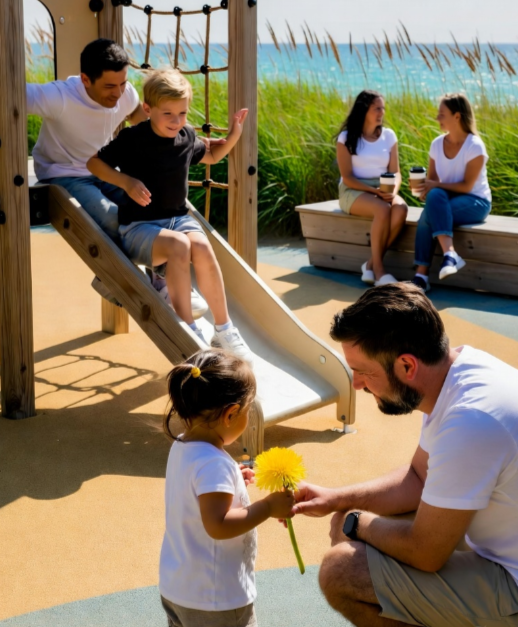Why Local Family Activities Matter More Than You Think
The Science Behind Shared Experiences
Shared activities boost family belonging in powerful ways. Consequently, studies reveal these experiences protect adolescents from developing risky behaviors. Additionally, they satisfy emotional needs through reciprocal relationships.
Think of it this way: each outing plants a seed. Therefore, some seeds grow into confidence, others into curiosity. Meanwhile, all of them strengthen the bond between you and your child. Ultimately, you’re not just killing time—you’re building a foundation.
Understanding Your Child’s Developmental Stage
Not all activities serve all ages equally. Thus, age-appropriate choices maximize engagement and learning. Subsequently, matching activities to developmental stages ensures success rather than frustration.
Infants and Toddlers: Sensory Wonder Years
Babies explore through their senses exclusively. Therefore, seek environments with varied textures, colors, and sounds. Consequently, botanical gardens offer perfect sensory richness. Similarly, children’s museums with tactile exhibits work beautifully.
Toddlers thrive on movement and discovery. Hence, splash parks and nature trails satisfy their curiosity. Additionally, these venues allow independent exploration within safe boundaries.
Preschoolers: The Imagination Explosion
Between three and five, imagination reigns supreme. Accordingly, pretend play becomes essential for cognitive growth. Therefore, farms, fire stations, and interactive theaters captivate this age group.
Preschoolers also develop cooperative play skills. Thus, group activities teach turn-taking and emotional regulation. Meanwhile, these lessons unfold naturally through fun.
School-Age Children: Skill Builders
Elementary-aged kids crave challenges and mastery. Subsequently, rock climbing gyms, science centers, and sports leagues appeal strongly. Furthermore, these activities build confidence through accomplishment.
This age group also develops special interests. Therefore, following their passions—whether dinosaurs, art, or soccer—deepens engagement. Consequently, you’re nurturing their unique identity.
How to Choose the Right Outing
Decision paralysis hits hard when options overwhelm. Nevertheless, several principles guide smart choices consistently.
Consider Energy Levels and Timing
Morning activities suit young children best. Conversely, afternoon outings work better for older kids. Additionally, research on family engagement emphasizes scheduling around natural rhythms.
Plan for realistic timeframes, too. Specifically, toddlers manage one to two hours comfortably. Meanwhile, school-age children handle longer excursions. Ultimately, leaving before meltdowns preserves positive memories.
Balance Structure and Freedom
Some children thrive with planned activities. Others need unstructured exploration. Therefore, know your child’s temperament. Additionally, mix both types throughout the month.
Structured options include classes, guided tours, and ticketed events. Conversely, unstructured choices involve parks, beaches, and hiking trails. Consequently, variety prevents boredom while building adaptability.
Factor in Your Family’s Interests
Your enthusiasm matters tremendously. Indeed, children detect genuine interest versus obligation. Thus, choose outings you’ll enjoy too. Subsequently, your engagement amplifies their excitement.
If you love history, explore local landmarks together. Alternatively, nature lovers should prioritize outdoor adventures. Meanwhile, artistic families thrive at galleries and craft fairs. Ultimately, shared passions create deeper connections.
Local Gems You Might Be Overlooking
The best things to do with kids near me often hide in plain sight. Therefore, expand your mental map beyond obvious destinations.
Community Resources
Libraries offer far more than books now. Specifically, many host story times, maker spaces, and cultural programs. Additionally, they’re free—a significant advantage for budget-conscious families.
Recreation centers provide swimming, sports, and classes. Similarly, community theaters offer youth productions and workshops. Consequently, these venues build social connections while entertaining.
Nature’s Playground
Play in natural settings proves essential for healthy development. Moreover, outdoor time reduces stress and increases physical activity. Subsequently, regular nature exposure builds lifelong environmental appreciation.
Local parks offer immediate access to green space. Meanwhile, nature preserves provide trail systems and wildlife viewing. Additionally, many feature educational programs on weekends.
Cultural Experiences
Farmers markets teach children about food origins and community. Furthermore, they offer tastings, live music, and artisan demonstrations. Consequently, sensory richness makes learning delicious.
Local festivals celebrate cultural heritage throughout the year. Therefore, attend ethnic celebrations, art walks, and seasonal events. Meanwhile, exposure to diverse traditions builds empathy and understanding.
Making Every Outing Count
Presence transforms ordinary outings into extraordinary memories. Therefore, apply these strategies consistently.
Put Phones Away
Digital distraction sabotages connection. Thus, designate phone-free periods during activities. Consequently, you’ll notice details you’d otherwise miss. Additionally, children feel genuinely prioritized.
Take photos sparingly and intentionally. Specifically, capture a few key moments, then engage fully. Ultimately, lived experiences matter more than documented ones.
Follow Their Lead Sometimes
Children possess innate wisdom about their needs. Therefore, let them guide occasionally. Meanwhile, observe what captures their attention naturally.
If they fixate on a particular exhibit, linger there. Conversely, skip planned stops if something else enchants them. Consequently, flexibility demonstrates respect for their interests.
Embrace Imperfection
Perfect outings exist only in imagination. Indeed, tantrums, rain, and closed attractions happen. Nevertheless, these challenges teach resilience and adaptability.
Model graceful problem-solving when plans change. Additionally, find humor in mishaps rather than frustration. Subsequently, children learn that joy persists despite imperfection.
Budget-Friendly Options
Meaningful experiences don’t require significant spending. Furthermore, free and low-cost activities often create the strongest memories.
Free Community Events
Cities and towns host numerous complimentary programs. Specifically, check municipal websites for concert series, outdoor movies, and holiday celebrations. Additionally, these events foster community belonging.
Many museums offer free admission days monthly. Similarly, zoos and aquariums provide discounted rates for residents. Therefore, strategic planning maximizes access.
DIY Adventures
Creativity transforms ordinary locations into adventures. For instance, create scavenger hunts in familiar parks. Alternatively, organize neighborhood nature walks with field guides.
Backyard camping delivers excitement without travel costs. Meanwhile, sidewalk chalk art contests engage creative energy. Ultimately, imagination matters more than expense.
Safety and Preparation
Smooth outings require thoughtful preparation. Therefore, anticipate needs before leaving home.
Pack Smart
Essentials include snacks, water, and first aid supplies. Additionally, bring weather-appropriate clothing layers. Furthermore, pack activities for waiting periods—small toys, books, or drawing materials.
Keep a go-bag ready with these items. Consequently, spontaneous outings become possible without scrambling.
Research Before You Go
Check websites for hours, admission costs, and age restrictions. Moreover, read recent reviews for current conditions. Additionally, call ahead about accessibility needs.
Prepare children for what they’ll encounter. Specifically, describe the environment and expected behavior. Subsequently, transitions feel less overwhelming.
Building a Regular Rhythm
Consistency creates anticipation and security. Therefore, establish regular outing patterns when possible.
Weekly Traditions
Saturday morning library visits become treasured rituals. Similarly, Sunday afternoon park time provides reliable connection. Consequently, children internalize family values through repetition.
Monthly special outings mark time meaningfully. For example, first Saturday museum visits or quarterly theater performances. Meanwhile, these traditions create structure amid chaos.
Seasonal Exploration
Each season offers unique opportunities worth celebrating. Thus, autumn brings apple picking and pumpkin patches. Meanwhile, summer enables swimming and outdoor concerts.
Winter provides sledding and holiday lights viewing. Subsequently, spring brings nature walks to observe blooming flowers. Ultimately, seasonal awareness deepens environmental connection.
When to Stay Home
Sometimes the best outing is none at all. Indeed, over-scheduling creates stress rather than joy. Therefore, recognize when rest serves better.
Children need downtime for unstructured play. Additionally, quiet days at home allow processing and integration. Consequently, balance activity with restorative peace.
Trust your instincts about energy levels. Specifically, tired or sick children benefit from canceling plans. Meanwhile, guilt-free adjustments model healthy self-awareness.
Creating Lasting Impact
The question “things to do with kids near me” ultimately asks something deeper. Specifically, it inquires how to nurture growing souls intentionally.
These outings teach children they matter. Moreover, developmentally appropriate activities support growth across all domains. Furthermore, shared experiences build trust and communication.
Years from now, your children won’t remember every destination. However, they’ll remember feeling valued, heard, and loved. Consequently, that feeling becomes their inner compass.
Your Next Step
Stop searching and start experiencing. Therefore, choose one local destination this week. Additionally, go with open curiosity rather than perfection.
Notice what delights your child unexpectedly. Meanwhile, observe how presence transforms ordinary moments. Subsequently, let these insights guide future choices.
The best things to do with kids near me aren’t distant or expensive. Instead, they’re opportunities to show up fully. Ultimately, your attention creates the magic—everything else is just location.
Now go. Your child is waiting for the next adventure. And honestly? So are you.





